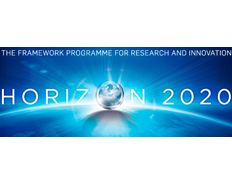Print

Cold Molecules for Fundamental Physics: CoMoFun
Details
Locations:Germany
Start Date:May 1, 2021
End Date:Apr 30, 2026
Contract value: EUR 1,875,750
Sectors: Research & Innovation
Description
Programme(s): H2020-EU.1.1. - EXCELLENT SCIENCE - European Research Council (ERC)
Topic(s): ERC-2020-STG - ERC STARTING GRANTS
Call for proposal: ERC-2020-STG
Funding Scheme: ERC-STG - Starting Grant
Grant agreement ID: 949119
Project description
Ultracold molecules to heat up the research on modern physics
Laser cooling of atomic gases in a magneto-optical trap (MOT) has revolutionised modern physics. Using a combination of precisely tuned lasers and magnetic fields, the MOT has enabled the invention of precise instruments, such as atomic clocks, GPS, magnetometers, gravimeters and accelerometers. However, molecules can offer more: precisely controlled molecules can be used to test the most fundamental models in physics, study new phases of matter, model complex quantum systems, and serve as elements of a scalable quantum processor. The EU-funded CoMoFun project plans to create a high-density ultracold gas of polar molecules by laser cooling. Researchers will achieve a five-fold increase in the density of molecules at ultralow temperatures by laser-cooling stable and deeply-bound aluminium monofluoride molecules.
Objective
Laser cooling of atomic gases in a magneto-optical trap (MOT) has revolutionized modern physics. A MOT uses precisely tuned lasers and a magnetic field to cool atoms and trap them. It has enabled the invention of precise instruments, such as atomic clocks, magnetometers, gravimeters and accelerometers. It has also enabled new fundamental research with unprecedented precision and the study of matter dominated by quantum effects. However, there is still potential to push the boundaries of science and technology: using ultracold molecules. Project CoMoFun aims to do just this, creating a high-density ultracold gas of polar molecules by laser cooling to build a new platform for fundamental research.
A high-density ultracold gas of polar molecules has a wide range of new applications. It can be used to study a dipolar quantum gas, to test fundamental physics and to store and process quantum information efficiently. An array of polar molecules, all interacting with each other via controllable and strong interactions, can serve as a universal simulator for more complex quantum systems that cannot be modeled by a computer. Simulating such strongly-interacting many-body systems from the bottom-up will aid the understanding of fascinating phenomena such as high-temperature superconductivity and exotic forms of magnetism.
Recently, it has become possible to make a MOT of molecules. However, the density of the molecules is far too low for most applications. CoMoFun will increase the density by five orders of magnitude by laser-cooling stable and deeply-bound aluminum monofluoride molecules. The high density provides an excellent starting point to investigate evaporative cooling to quantum degeneracy. The molecules can then be arranged in a regular array by loading them into a trap formed by interfering laser beams. This instrument can then be used for precision measurements and applications in quantum information and simulation, to realize the full potential of molecular MOT.

